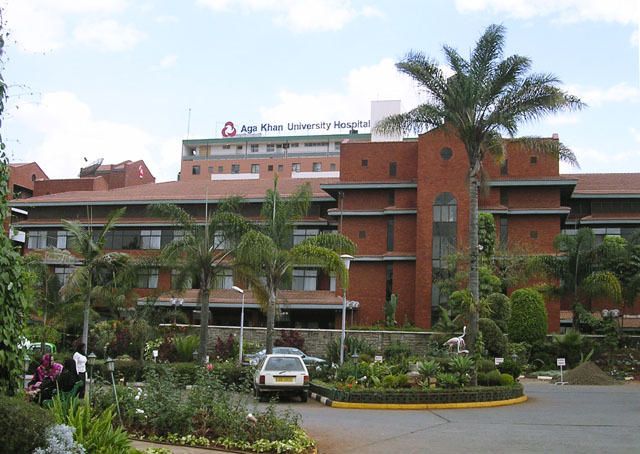 The girl was quiet, withdrawn,
and showed little emotion during hospital visits. Photo/ Freepik.
The girl was quiet, withdrawn,
and showed little emotion during hospital visits. Photo/ Freepik.
For 11 long months, the wounds on the abdomen of a high school student in Nairobi continued to fester.
She had undergone a laparoscopic surgery on her pelvis wall to treat endometriosis. The surgery involves tiny incisions, the kind that usually disappear within days.
But for this 17-year-old student, they remained open, raw, and oozing. Medics had cleaned and dressed them at every hospital visit. Still, they would not close.
“She experienced multiple re-admissions,
sometimes a month or two apart, for persistent abdominal pain and nonhealing
laparoscopic port sites, which had a blood-stained discharge,” say Dr Maryanne
Mwangi and Dr Charles Muteshi, the medics who treated her at the Aga Khan
Hospital Nairobi, in a new case report.
"These flesh wounds on the port sites persisted for approximately 11 months."
At first, the medics thought it was just a rare
complication of surgery.
Turns out, the wounds were not failing to heal. They were being reopened. But by who? The patient persistently denied scratching the surgical wounds.
Endometriosis is a painful condition where tissue similar to the uterine lining grows outside the womb.
The pain often gets worse during periods, sex, or when using the toilet. For some people, the pain can happen all the time, not just during their period. It is a major reason many people seek medical help.
“She (the student) had constant abdominal pain and an umbilical discharge,” the doctors say in a report they published in the Ajog Global Reports journal. “Her academic and extracurricular life were greatly affected.”
Before being diagnosed with endometriosis at Aga Khan, the student had jumped from one hospital to another for three years,
misdiagnosed and misunderstood, even treated for tuberculosis at one point, they said.
The medics counselled her and her parents about a diagnostic laparoscopy with possible endometriosis treatment, to which they consented.
The doctors made tiny holes (ports) on the abdomen and on one port inserted a thin, lighted tube with a camera, called a laparoscope, to be able to see internal organs and the pelvic cavity. On another port they inserted laparoscopic scissors to remove endometriosis.
Then problems began.
“The laparoscopic wounds remained as flesh wounds for 11 months despite multidisciplinary treatment, including care from a plastic surgeon,” Dr Mwangi and Muteshi say. The two are obstetricians and gynaecologists, and Dr Muteshi is a fertility expert in addition.
It wasn’t
until a fourth admission that the truth began to surface.
The girl was quiet, withdrawn, and showed little emotion during hospital visits.
The doctors noticed her flat mood and suggested counselling. She declined at first. But one day, she said yes.
In that
session, the girl revealed the truth.
 The Aga Khan University Hospital in Nairobi, which successfully treated the patient.
The Aga Khan University Hospital in Nairobi, which successfully treated the patient.
“She revealed that she had engaged in self-cutting with a sharp blade as a means of coping with abdominal pain,” the doctors say in their report, titled “Self-inflicted chronic laparoscopic wounds in endometriosis—unveiling major depressive disorder: a case report.”
She explained that she felt isolated from her classmates, overwhelmed by hospital stays, and disconnected from her parents. She feared she would not make it through her final exams.
Even then,
she denied scratching the surgical wounds. But her doctors grew increasingly
convinced the persistent injuries were self-inflicted –
a silent scream for help.
But why would she cut herself?
They referred her to a psychiatrist who made a diagnosis of major depressive disorder.
Major Depressive Disorder (MDD) is a serious mental health condition characterised by persistent sadness, loss of interest or pleasure in daily activities, and a range of emotional and physical problems that interfere with a person’s ability to function normally at work, school, or in relationships.
Studies show that people with endometriosis are more likely to experience depression and anxiety than those without the condition.
“Different studies have consistently shown that more than half of patients with endometriosis have moderate to severe emotional disorder,” Dr Mwangi says.
“There are few previous studies that have evaluated the effect of endometriosis on mental health in adolescents.”
Still, the medics say self-directed violence remains uncommon.
The student was immediately put on antidepressants. These are medicines used to treat depression and other mental health conditions by balancing chemicals in the brain that affect mood and emotions.
What happened
next stunned the care team.
“Remarkably, her depressive symptoms improved,” the report states. “And the laparoscopic wounds that had persisted for 11 months healed completely.”
She completed her final exams and went on to join college. Her endometriosis is now managed with hormonal treatment, and she continues to receive psychiatric support.
“To our knowledge, there are no reported cases of adolescents with endometriosis who presented with chronic laparoscopic wounds caused by self-harm,” said Dr Mwangi, the lead author of the case report.
Dr Mwangi and Dr Muteshi explained that the chronic pain caused by endometriosis can trigger inflammation of the brain or spinal cord and heighten pain sensitivity – all of which feed into depression.
In this young patient’s case, the pain, the repeated surgeries, and the emotional toll of a delayed diagnosis created the perfect storm.
The two specialists urge doctors to look beyond physical symptoms when surgical wounds do not heal.
“Persistent laparoscopic wounds caused by continuous scratching were a warning sign,” they said. “Notably, the wounds healed only after psychiatric intervention.”
They said this case is a lesson. Sometimes, healing starts not in the body, but in the mind.
“Self-directed violence, which may take on several forms of
self-harm, is a red flag that necessitates referral for psychological support
and even psychiatric care,” they said.
“In this case, persistent laparoscopic wounds caused by continuous scratching were a warning sign, however, the patient denied scratching them. Notably, the wounds healed only after psychiatric intervention and initiation of antidepressant therapy.”











